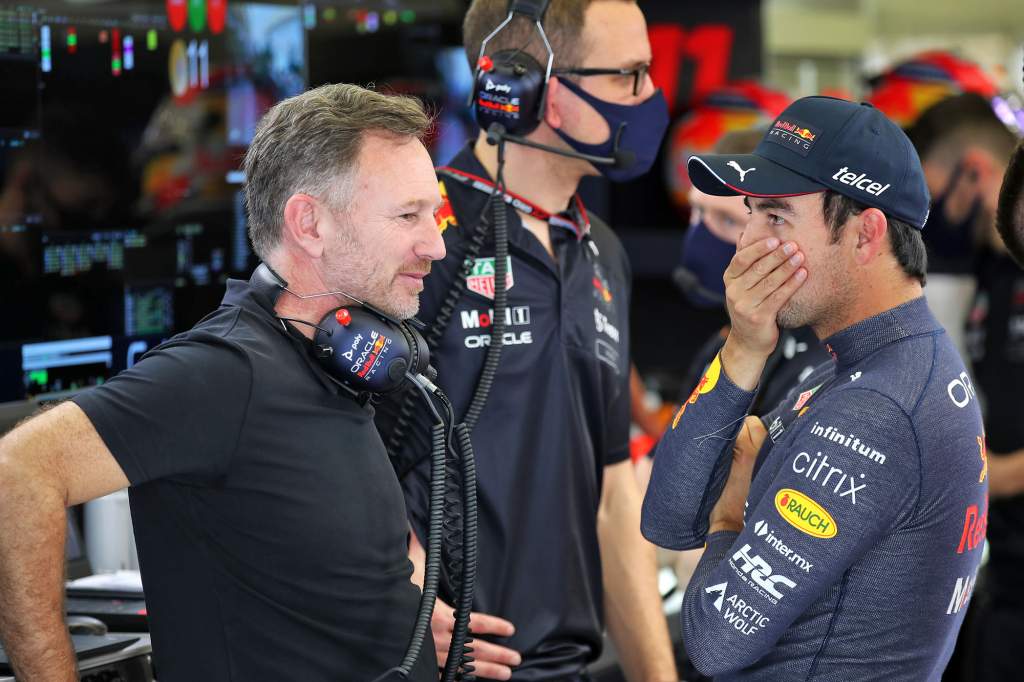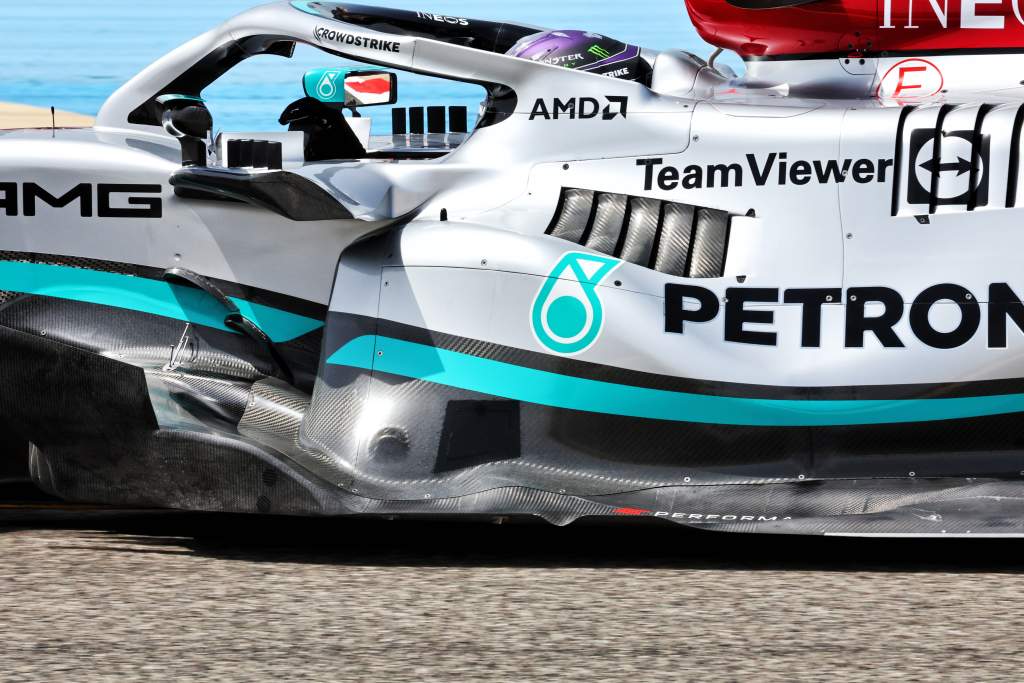Up Next

Formula 1’s first real 2022 technical rules row has started simmering in Bahrain as Mercedes kicked off the reveals of what the biggest teams have planned for the first race.
Mercedes’ suite of upgrades including a dramatic sidepod solution is the first major development to be sighted since the 2022 cars broke cover at the first test in Spain.
This is not a ‘B-spec’ Mercedes as some have claimed as the core car architecture is the same, but it is a fascinating sign of what is to come as we learn exactly how the teams have interpreted the new technical regulations.
F1 managing director of motorsport Ross Brawn joked a few weeks ago it would be naive to think there would be no disputes and that has already proven to be the case.
Red Bull found itself in a self-inflicted muddle shortly after Mercedes’ upgrades broke cover as the respected Auto Motor und Sport journalist Michael Schmidt quoted Christian Horner as suggesting the design was illegal and against the spirit of the rules.
The team then moved to claim Horner had not spoken with any media or made any comments about the Mercedes car, then released a formal statement in which it said: “Christian Horner has not given any interviews regarding Mercedes’ car. Any quotes being attributed to him this morning are incorrect.”
But that was subsequently softened to the team indicating it had made no official comment regarding Mercedes’ car and would not be doing so – making it easy to draw a distinction between something Horner could have said in passing, and what the team regards as an official comment.

It was unfortunate that a journalist of Schmidt’s repute was caught in that kind of bizarre crossfire. However, the message (official or not) was clear: Mercedes’ design has caught the eye.
And it’s not just Mercedes’ interesting sidepods either. Ferrari has effectively questioned the mirrors too, not explicitly stating it believes them to be illegal but that they are “quite surprising, something we’re not expecting” and that it “needs to be addressed” for the future.
The implication across this mini-saga is that in one way or another, Mercedes’ designs might go against the intention of the rules.
In explicit, technical regulations terms, the FIA will naturally be checking for a breach. But how do you police the intention of the rules?
F1 and the FIA have made it clear that swift action will be taken against any design believed to circumvent the efforts to make the cars easier to follow and therefore more ‘raceable’.
This will also be extended to ideas that look to exploit supposed loopholes.
Perhaps this scenario should trigger another, more philosophical question: should the FIA care about the ‘intention’ of the rules or just exactly what the rules say?
It has long been argued by many – including Red Bull’s Adrian Newey, master of art of clever technical interpretations – that there is no regulation governing the so-called spirit of the regulations.
The debate over whether this (to take inspiration from this very argument) is in the ‘spirit’ of F1 is a dangerous topic to broach. We could be here for hours.

But it is something that will come to the surface if any corrective action were to be mooted, let alone taken, whether it’s against a Mercedes design or any other.
We’re already edging towards the first test of the FIA’s new, robust policing philosophy. And this is just the start of the upgrade fun as Red Bull and McLaren are expected to be rolling out new parts over the final two days.
Essentially, this whole week will be team personnel looking at other cars and arguing ‘that’s not fair!’ if they risk being out-innovated.
This has begun with the Mercedes upgrades but it is extremely unlikely it will end with them.





